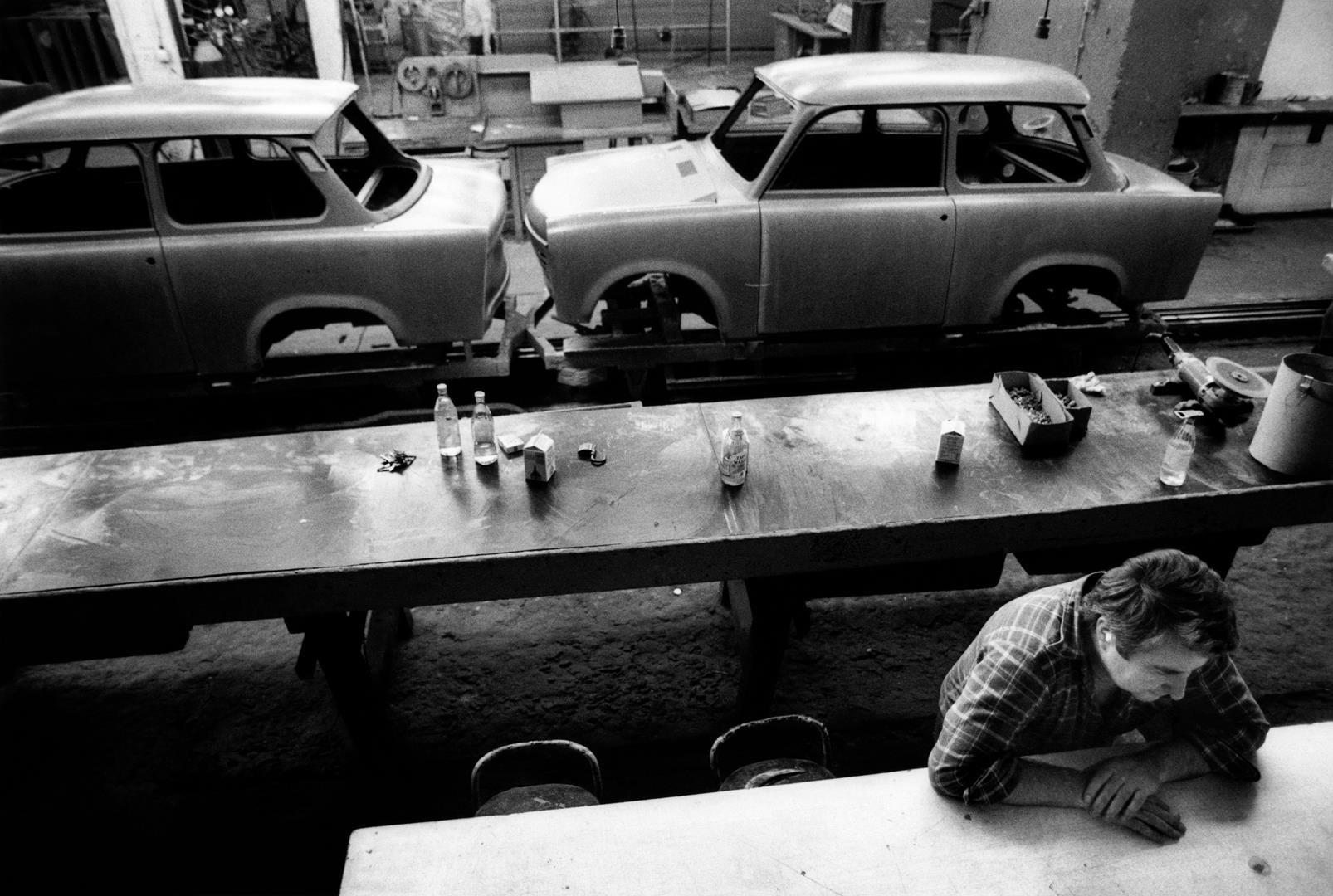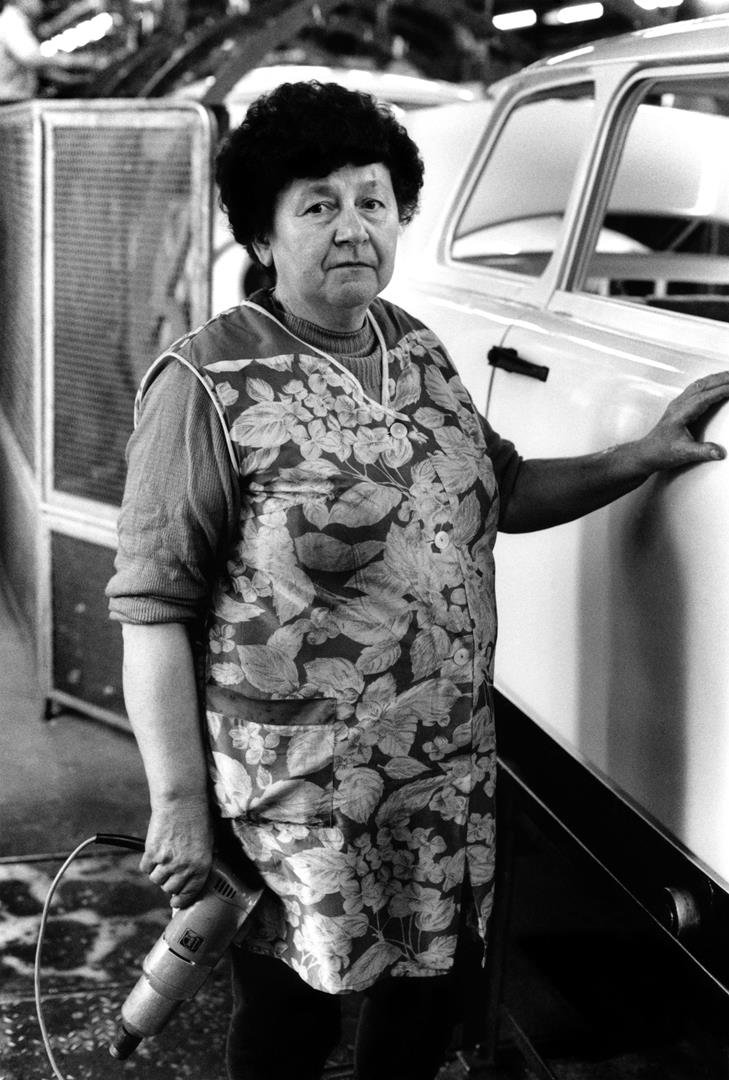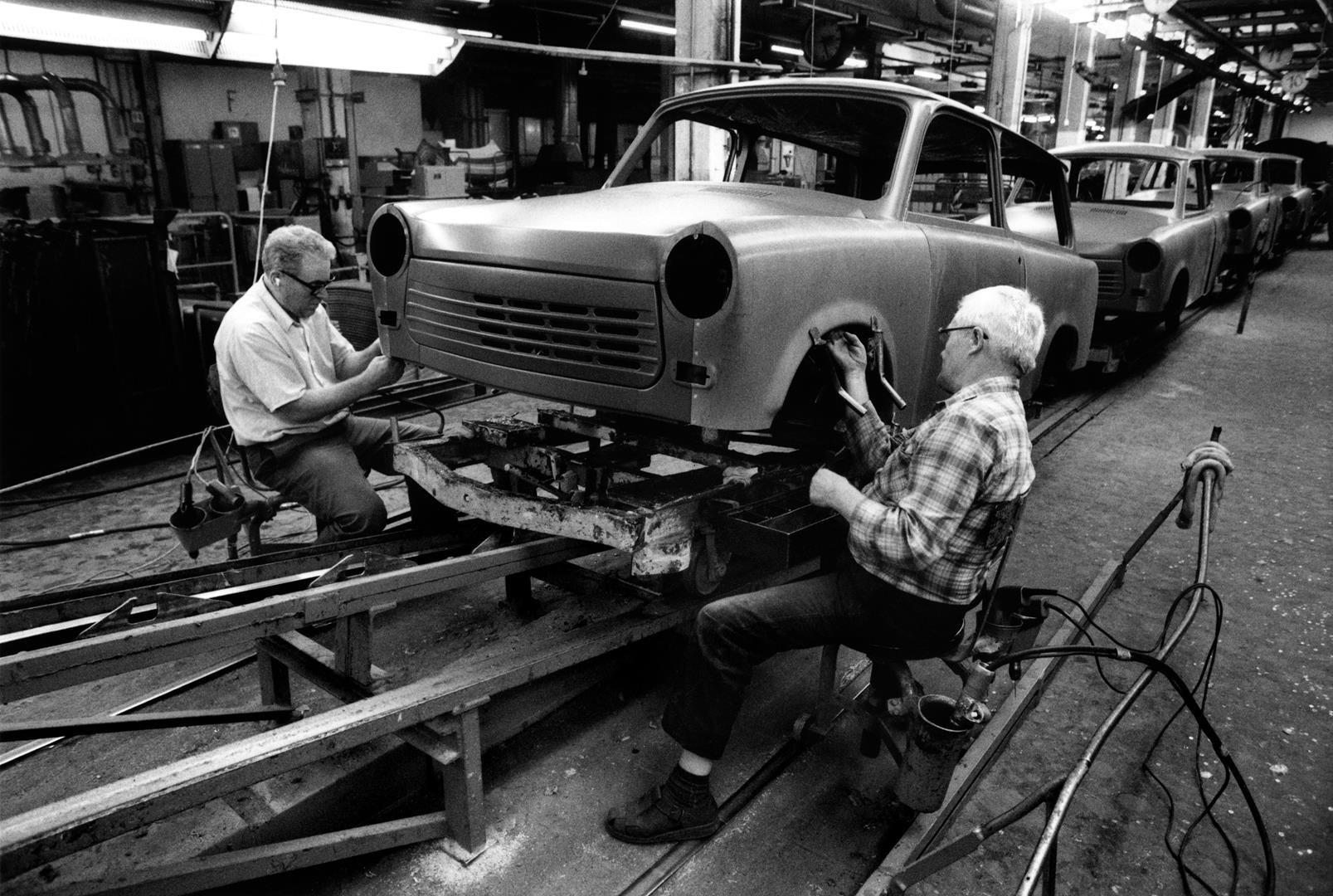Symbol of the GDR
Between 1957 and 1989 every one in two cars was a Trabant in the GDR. The delivery time of this car, at the time when the demand for it is at its peak, was twelve to fourteen years. Working in shifts, the factory workers at the Sachsenring Car Factory produce 576 cars per day. With that they only met half of the demand, lagging far behind as a result of a lack of technical innovations within the car factory, where part of the production process was still conducted manually. Nevertheless, during the period of thirty-four years that the car was produced, three million cars were made. The Trabant grew out to become the most typifying symbol of former Eastern Germany and one of the most important export products of the country. Whereas the Trabant was initially considered to be modern, it turned out to be the case in the following decennia that the car could simply not compete with the then current, much more advanced Western automobile techniques. During the years in which the Trabant was produced the car was technically hardly improved and the exterior remained practically unaltered.
Photographs
Roemers photographs show the production process of the very last Trabant in sober black-and-white photographs; we see welding, assembling of doors and polishing of bumpers. People are working, concentrated and with a lot of love and attention. This seems to be a day like any other. Next to the conveyor belt a man is busy reading his newspaper, the front page showing an advertisement of car brand Mercedes, which had begun to sell cars in Eastern Germany no sooner than after the reunification. In a typically Eastern German canteen people are having their lunch. Two women push a fully assembled white Trabant out of the garage. They do not even notice the photographer. The factory workers that Roemers portrays from up close, on the contrary, do stop working and take time to model for the photographer. A woman in a floral patterned apron lays her drill aside, as does the welder, looking into the photographer's lens with his tools in hand. Both look rather resigned. Their work is done.
Trabants
Whereas the Sachsenring car Factory could hardly meet the demand for Trabis, as the car is affectionately called, before 1989, the production fully collapses two years later. After the fall of the Berlin Wall people from Eastern Germany massivly trade their Trabant for a Volkswagen, BMW or another Western car brand. In the west the Trabant experiences a brief hey-day, being some sort of curiosity from the East, but quickly the interest ebbed away. And when Roemers visits Zwickau again in 1992, only one year after the last Trabant had left the factory, he finds Trabis as scrap metal at the junkyard. Anno 2009 the Trabant has a cult status, and its very own group of devotees and collectors.
Martin Roemers
Martin Roemers is a free-lance photographer. His photographs are published world-wide in, amongst others, The International Herald Tribune, The Guardian and the Frankfurter Allgemeine Zeitung . This is the second time that the Kunsthal shows a photo series by Roemers. In 2007 the exhibition ‘De Eindloze Oorlog' (The Endless War) was put on display, showing portraits of veterans from the Second World War
Publication
Earlier on the publication entitled: ‘Trabant - The Final Days of Production, Die letzten Tagen der Produktion, 2007 (ISBN 978 3 8030 3324 6) was published at Wasmuth Verlag in Berlin.
more


